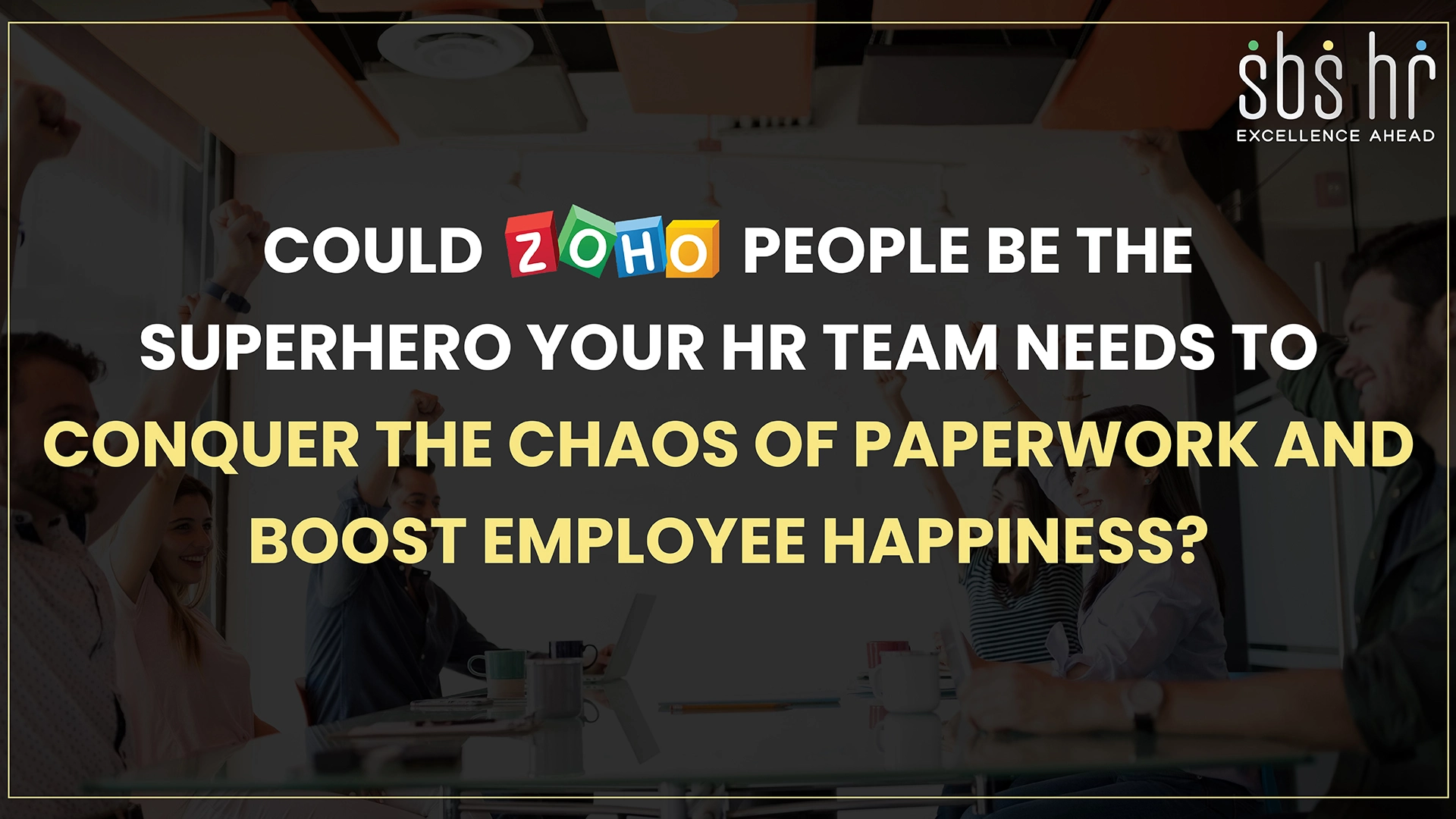In today’s digital age, leveraging advanced HR management tools like Zoho People can revolutionise how businesses handle their human resources. Implementing Zoho People involves more than just software installation—it’s about transforming HR processes to enhance efficiency, employee engagement, and organizational effectiveness.
Zoho People is a cloud-based HRMS designed to automate various HR tasks such as employee data management, attendance tracking, leave management, performance evaluation, and more. It is part of the Zoho suite of business applications, known for their user-friendly interfaces and integration capabilities.
Which Zoho People feature could be your HR team’s new best friend-employee database management, attendance tracking, or seamless integration?
KEY FEATURES OF ZOHO PEOPLE
1.Employee Database Management:
Centralizes employee information, making it easy to access and update.
2.Attendance Management:
Tracks employee attendance through various methods like biometric devices, web check-ins, and mobile apps.
3.Leave Management:
Automates leave requests, approvals, and accruals, ensuring transparency and accuracy.
4.Time Tracking:
Monitors working hours, project time, and overtime, aiding in accurate payroll processing.
5.Performance Management:
Facilitates performance reviews, goal setting, and feedback, promoting continuous employee development.
6.Employee Self-Service:
Empowers employees to access and update their information, request leaves, and view attendance records.
7.Integration:
Seamlessly integrates with other Zoho applications and third-party tools, enhancing its functionality.
Unlocking Business Potential with Zoho People: favored position:
1.Improved Efficiency:
Automates repetitive HR tasks, allowing HR personnel to focus on strategic activities.
2.Enhanced Accuracy:
Reduces human errors in data entry and calculations, ensuring accurate records and payroll.
3.Increased Transparency:
Provides employees with access to their information, fostering trust and transparency.
4.Scalability:
Adapts to the growing needs of the organization, making it suitable for businesses of all sizes.
5.Cost-Effective:
Offers a comprehensive HR solution at a competitive price, providing excellent value for money.
Navigating the Zoho People Implementation Journey
Needs Assessment
Before diving into the implementation process, it is crucial to assess your organization’s HR needs. Identify the pain points in your current HR processes and determine which features of Zoho People can address these issues.
Preparatory Measures
Once you have a clear understanding of your needs, create a detailed implementation plan. This plan should outline the scope of the project, timeline, budget, and resources required.
Data Migration
One of the most critical steps in the implementation process is migrating existing HR data to Zoho People. This includes employee records, attendance
data, leave balances, Zoho People provides tools and support to facilitate this process.
System Configuration
Configure Zoho People to align with your organization’s policies and processes. This includes setting up organizational structures, defining roles and permissions, configuring leave policies, attendance rules, and performance management criteria.
Integration with Other Systems
If you are using other Zoho applications or third-party tools, integrate them with Zoho People to streamline data flow and enhance functionality. For instance, integrating Zoho People with Zoho Payroll can automate payroll processing, while integration with Zoho Projects can help track project time and costs accurately.
Training and Change Management
Conduct training sessions for HR personnel, managers, and employees, covering the various features and functionalities of Zoho People. Provide user manuals, video tutorials, and other resources to facilitate learning.
Testing
Conduct end-to-end testing of all processes, including data entry, leave requests, attendance tracking, and performance evaluations.
Go-Live
Communicate the go-live date to all users and provide any last-minute instructions or support. Monitor the system closely during the initial days to address any teething problems and ensure a smooth transition.
Post-Implementation Support
Implementation doesn’t end with going live. Continuously monitor the system’s performance and gather feedback to make improvements. Regularly update the system to leverage new features and enhancements offered by Zoho.
By adhering to these steps, organizations can leverage Zoho People to its full potential, creating a more efficient and transparent HR environment.
Conclusion
Implementing Zoho People can significantly enhance your HR operations, improving efficiency, accuracy, and employee satisfaction. By following the steps outlined in this guide, you can ensure a successful implementation that meets your organization’s needs. Embrace the power of Zoho People to transform your HR processes and drive organizational success.

